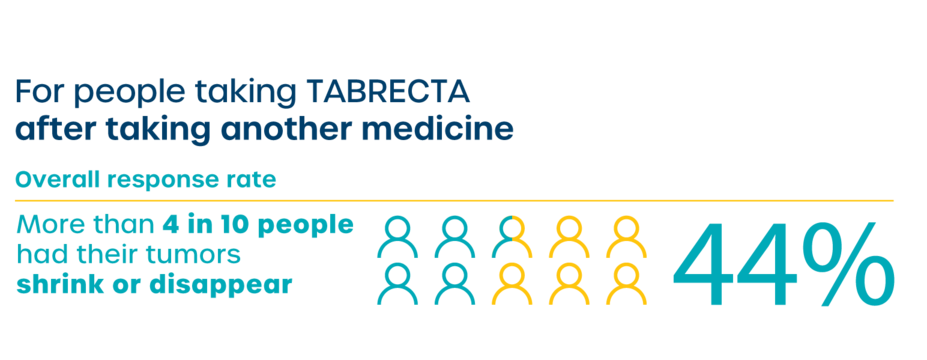Proven clinical trial results
In a clinical trial, TABRECTA was studied in different groups of people with MET exon 14 skipping: those taking TABRECTA as their first treatment and those previously treated before taking TABRECTA.
The overall response rate measures the size or number of tumors people have. This includes:
people whose tumors became smaller or fewer in number (which is called a partial response), and
people whose tumors disappeared completely (which is called a complete response). A complete response is not the same thing as a cure.
Duration of response is the length of time that a tumor continues to respond to treatment without the cancer growing or spreading.
For people taking it as their first treatment, TABRECTA is proven to shrink tumors. Among those previously untreated, 68% of 60 people achieved a response with TABRECTA. Of these responders, 5% had a complete response and 63% had a partial response.
The median (or midpoint) duration of response for people taking TABRECTA as their first treatment was 16.6 months. This means that half of the people who responded to treatment continued to respond for longer than 16.6 months and half responded for less than 16.6 months.
For people who were previously treated, TABRECTA is proven to shrink tumors. Among those previously treated, 44% of 100 people achieved a response with TABRECTA. Of these responders, 0 people had a complete response and 44% had a partial response.
The median (or midpoint) duration of response for people who were previously treated before taking TABRECTA was 9.7 months. This means that half of the people who responded to treatment continued to respond for longer than 9.7 months and half responded for less than 9.7 months.

